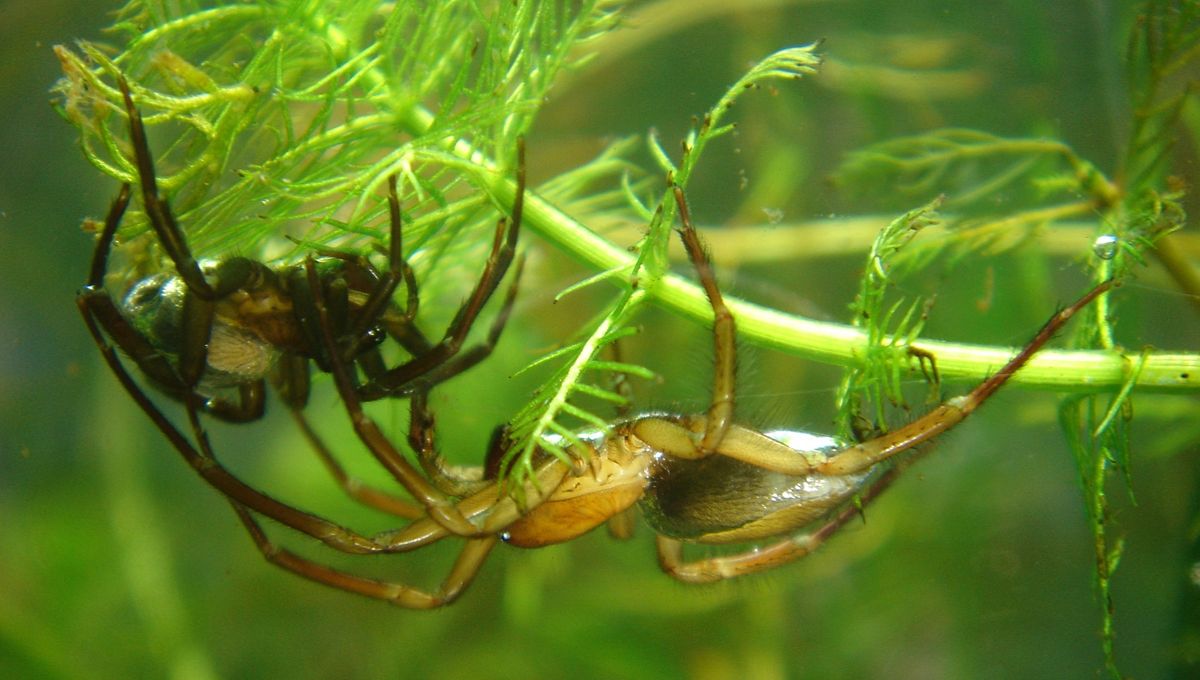
The diving bell spider is the only species of spider that can spend the entirety of its life underwater. Remarkably, it pulls off this aquatic lifestyle without the ability to actually breathe underwater.
The diving bell spider (Argyroneta aquatica) is native to freshwater habitats across large parts of Eurasia, from the British Isles and Siberia to Iran and South Korea. Japan even has its own subspecies, called the Japanese water spider (Argyroneta aquatica japonica) or mizugumo, which looks extremely similar but has larger genitalia.
They’re relatively small, measuring between 8 and 15 millimeters (0.3 and 0.6 inches) in length, although the males tend to be larger than the females (which is unusual for spiders).
Just like its land-dwelling cousins, the diving bell spider obtains oxygen from the air. So, to breathe, they must create a submerged bubble of air.
They create the bubble by rising to the water’s surface and sticking out their abdomen and legs, which are covered in hydrophobic hairs. They then swim down into the water with the pocket of air and add it to a submerged bubble that’s held in place with a silken web anchored to a surface, usually a plant.
The spider can hang out in a single bubble for more than a day. They would be able to stay longer, but nitrogen steadily diffuses from the bubble, causing it to gradually shrink.
They live on a diet of small aquatic bugs and small fish. To catch them, the spider will set up a system of webs around their vicinity that will alert them if prey is near. If the web is tugged, they quickly swim to catch them and drag them back into their bubble.
Watch out, though: as per the British Arachnological Society, the species can bite if mistreated, and it’s about as painful as a bee sting.
Many other species of semi-aquatic spiders exist in a variety of forms, but none commit to the bit as much as the diving bell spider – they even reproduce underwater. Male spiders will build their bubble near a female’s. When the time is right, he will create an opening between his bubble and the females, joining them into one. The male will then feed the bubble to make enough space for both of them.
Aquatic spiders shouldn’t be confused with sea spiders, which are from a totally different branch of the tree of life and aren’t even arachnids, despite their name. In fact, sea spiders (Chelicerata) are one of the oldest groups of arthropods and can be considered a “sister group” to other living arthropods, like insects, mollusks, and crustaceans.
Source Link: Diving Bell Spider: Nature's Only Aquatic Arachnid Builds Bubble Pods To Breathe